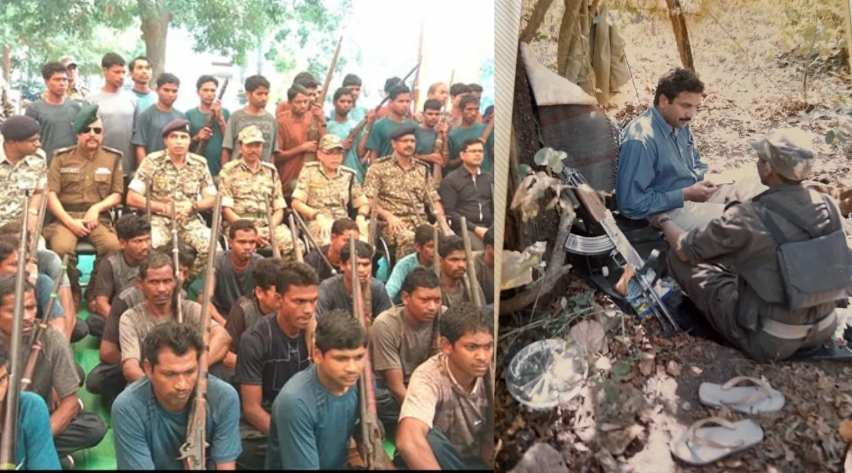The Maoist movement in India is facing a severe crisis, with several senior leaders and armed cadres surrendering following the success of Operation Kagar. Mallojula Venugopal Ravat, a 44-year-old Central Committee member of the party, recently surrendered to the Maharashtra police after years in hiding. Alongside him, approximately 60 armed cadres also laid down their arms, marking a significant setback for the insurgency.
Another key Maoist leader, Takkallapalli Vasudevara Rao, alias Ashanna, surrendered in Chhattisgarh in the presence of Chief Minister Vishnudev Sai and Home Minister Vijay Sharma, further highlighting the weakening grip of the movement. Analysts note that these high-profile surrenders signal the erosion of leadership and morale within the organization.
Guerrilla warfare in the age of drones is suicide dressed as revolution.
If the Maoists don’t shed their dogma, they would be extinct.
The Naxal struggle for existence can’t survive on century-old blueprints and jungle whispers.Unless they rewrite their strategies and march… pic.twitter.com/hE0bPCryGo
— Ravi Prakash Official (@raviprakash_rtv) October 18, 2025
Senior Journalist Raviprakash, whose observations have gained attention on social media, highlighted that the Maoists’ reliance on traditional guerrilla warfare is increasingly unsustainable in an era of advanced technology such as drones. He warned that unless the group abandons outdated doctrines, its members face imminent annihilation.
Raviprakash further stated that surviving in forest strongholds with century-old strategies is no longer feasible and that the insurgency cannot continue under such methods. He urged Maoists to leave remote hideouts (Abhayaranya) and integrate into civilian life, suggesting that they could transition from armed revolutionaries to contributing members of society. Photographs from his past interviews with Maoist members were shared to support his analysis.






